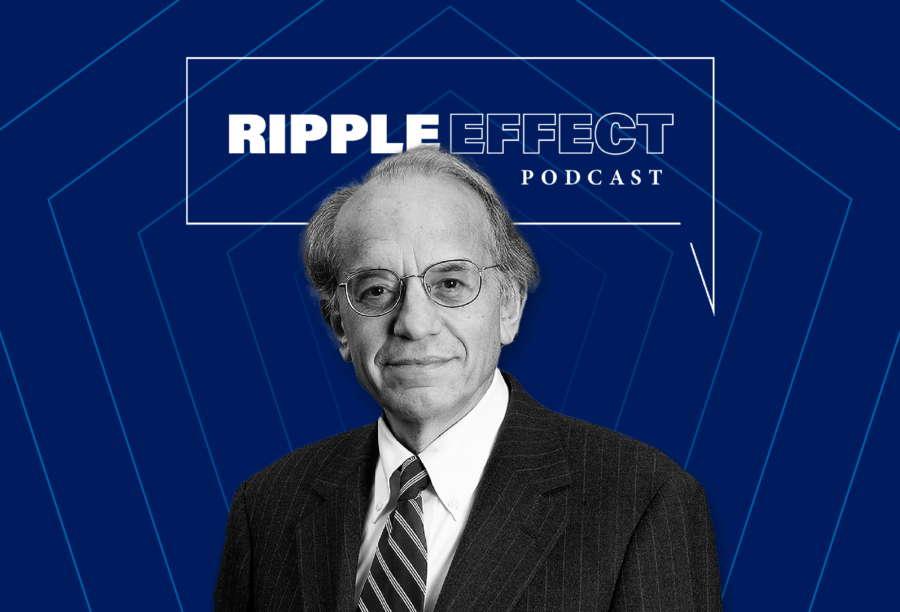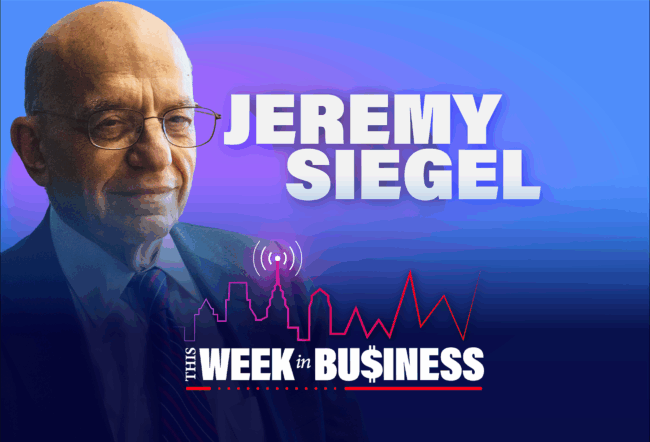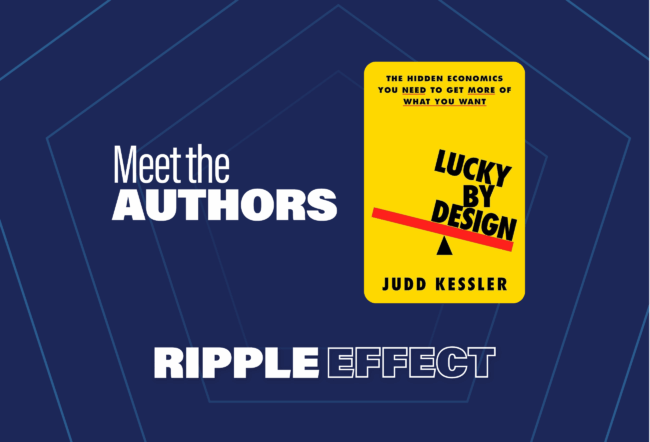Wharton finance professor emeritus Jeremy Siegel’s bestselling book, Stocks for the Long Run, was first released in 1994 and is now in its sixth edition. Siegel talks about what has changed in investment strategies, and what remains the same. This episode is part of the “Meet the Authors” series.
Transcript
What's the State of the Stock Market in 2024?
Dan Loney: It’s a pleasure to be joined by my friend Jeremy Siegel to talk about Stocks for the Long Run: The Definitive Guide to Financial Market Returns and Long-term Investment Strategies.
Jeremy, you’ve updated the book several times over the years. What's the dynamic with what you're seeing in the market and maybe even needing new editions?
Jeremy Siegel: The first edition came out in 1994, using data through 1992. Two years ago, we completed the sixth edition of the book. The longest period, I think, was eight or nine years in between. I wrote one right after the financial crisis, and so many things have continued to happen -- the pandemic and zero-interest rate Fed, the ESG movement, and so much more. I felt that there should be a lot more material. It is the biggest of all the books. I mean, it contains about 60 pages, 70 pages more than the fifth edition.
Loney: Let's start there, with what has happened in the last few years. Of the concepts that you have brought forward in the book, what are most important that investors should be thinking about right now?
Siegel: I think I've expanded a couple of things. One, I expanded the whole section on interest rates and the zero-interest rate period. Why interest rates have jumped dramatically. I emphasize that interest rates, especially long-term interest rates, are not just determined by the Federal Reserve. Everyone thinks the beginning and the end of interest rates is the Fed. That's true on the short side. But on the long side, there are so many factors like inflation growth, and something else that my research uncovered. And that is how good a hedge are bonds to other forms of financial risk. Bonds are often bought as a hedge. And I stress that that's an important component in interest rates and returns.
Loney: How do you view the state of the bond market and using it as a tool for investment right now?
Siegel: We had a period of extraordinarily low interest rates. Everyone sort of blames it, if they don't like it, on the Fed. But my research actually found that a lot of it was because during the period from the great financial crisis until the pandemic, bonds were the best hedge you could buy against stock market risk. In other words, when there was a crisis or whatever, your bonds went up when your stocks went down. But there was one sort of risk that a bond can't deal with, and that's inflation rates. And of course, that's what has exploded over the last two, three years, since the pandemic. What's happened is bonds have not become as good a hedge, and that's a major reason why bond rates are going back to the levels that we had pre-financial crisis.
How Investors Can Deal with "Black Swan" Events and Other Crises
Loney: The pandemic falls into the category of “black swan” events. Take us through the impact that those events have on the long-term strategy that an investor has to come to the table with.
Siegel: That's an interesting question, Dan. The important thing is, these black swan events seem to have a very critical short-term effect. But what is quite amazing is they get washed out and have very little long-term effect. For instance, let me just give you an interesting statistic. When I finished the sixth edition of the book a few years ago, I went back to my first edition. And I said, what was the long-term return on stocks after inflation annual return? This was more than 30 years ago. It was 6.7%.
What was it in my sixth edition? 6.7%. So, think of everything that's happened in 30 years — the financial crisis, black swan. The pandemic black swan, and all that. But the return on stocks has remained remarkably stable, steady. It's the same return that I had found in the very first edition of Stocks for the Long Run.
Loney: It’s amazing, and it’s somewhat cyclical. It all comes back to right where it began all those years ago.
Siegel: Right. The ups and downs. And we shake our heads, and we're always thinking we're in a special case. But I stressed in my very first edition what we call “mean reversion” of stock returns. And that means that we revert to the mean. You have a bad year or two, it’s followed by good years that make it up, and then we're just in a reversion to a long-term trend line. That's astounding.
And by the way, unique among asset classes. Bonds don't have it. Other assets, classes don't have it. Stocks are very volatile in the short run, the most volatile short-term asset class. The most stable long-run asset class. I think that’s really important, because how you position your portfolio is dependent on your horizon and how long out you choose to calculate.
Loney: That just reinforces having the long-run philosophy in your mix, because you will have ups and downs over the course of 10, 20, 30 years, and your expectation almost should be that
Siegel: Correct. And the reason why so many people stay out of stocks is they can't take the short-run volatility. But as I point out in the first edition, over a 30-year period—and don't forget, for all the young people, even 30 years. You're beginning your work, you're saving for your retirement, you're putting in IRAs, or in a retirement instrument, defined contribution plan. You're talking 30, 40, 50 years. And there’s never been negative return over that period, never. You are a winner with stocks in terms of stability and higher returns than you are when you stick with bonds. Bonds are great for liquidity short run, when you get a lot older. You need more certainty on your income. But, hey, we're all living longer. Even 65 is too young to start piling into bonds, in my opinion.
The Impact of Climate Risk, International Investing, and Meme Stocks
Loney: Let me take a few moments and talk about the Federal Reserve, which has drawn a lot of attention in the last few years. How much does the activity of the Fed end up playing in how an investor has to think about some of the moves they make?
Siegel: Well, it's really important in the short run, the Fed. But honestly, I'm going to take a famous quote of Warren Buffett, who said this 30, 40 years ago. He said, “If you would whisper in my ear every single future move of the Fed, it would not change one decision I'm going to make about stocks.”
Loney: In the last edition, you also talked about ESG investing. Talk about that as a component of investing in the philosophy of the long run.
Siegel: It is getting much more negative attention since after the book was was published. But I explained, I do a lot of hard analysis. And I'm not taking sides about whether diversity, equity, inclusion, all that is good or bad or ESG is good or bad. I just say if that is a factor for you, this might be the way you should shift your portfolio. But I stress that in shifting your portfolio like that, you may not get the best risk-return trade-off as a straight index portfolio. You might enjoy it more, because you're not owning companies you don't like. But in a risk-return trade-off, you may be taking an inferior one.
Except climate risk. I talk about the state of climate risk, and holding stocks that will hedge you against future climate risk. That's a little bit different. If climate change appears in your so-called utility function, as we kind of misuse the term, then you should actually make climate as one of the factors you consider when you invest in stocks. It may be hard to determine, but that becomes one of your considerations. And I talk a lot about that, too, and how you should structure in that case.
Loney: You bring up something interesting. I’ll have you expand upon it. Because people go into investing looking to be successful. But they also have their personal beliefs that, in many cases, they would prefer not to go against. How much of a challenge is that?
Siegel: It depends on how strong you are. If you think certain things that produce carbon dioxide hurt the climate. Now, some people think most companies in United States do that. Others are very narrow. So, it sort of depends on how broad you are. The broader you are, the more you're going to be undiversified, and your portfolio will be more volatile as a result.
I brought out the second edition, and I did long-run historical work. The best-performing stock from 1926 to the present -- since the S&P 500 was first constituted in March of 1957 to the present -- it happens to be Philip Morris, the cigarette producer. I hate cigarettes, and I don't want to be around anyone smoking. But I'm just telling you, if you’d never held it, you nicked your portfolio. And that might be OK. But you have to realize that you may be giving up something.
Loney: You've also discussed international investing. How do you view that component of a portfolio?
Siegel: Returns on international investing have not been great, I'll be honest with you. Over the last 15, 20 years, nothing has really compared to the U.S. S&P 500. It's almost impossible to beat any that broad-based of an index, anyway. I'm not saying it's hijacked the market, because these are great companies. But they've done unbelievably well. And as a result, they've left a lot of the world behind.
By the way, another thesis that has been left behind is value investing. I am a fan of value investment. But I have to admit that the last 15 years, value has not given you return. Now, again, nothing seems to compare — you could call it the Mag-7, the S&P 500, the tech sector in the U.S. Which, you know, after the bust of the dot-com era — and you and I can remember that. We're old enough to remember that. I hope that we don't repeat that again. I'm often asked, “Professor Siegel, are we seeing the beginnings of what we saw in 1997, ’98, ‘99?” And I say “I hope not.” I'd say “I think these great stocks are much better founded.” But could mania take over? Oh, yeah. The components of the bubbles that we have seen pop up over time are probably things that could still happen in different sectors because of the mindset of people in and around those sectors.
Look at the meme stock craziness. For total market value of these memes, GameStop and AMC and a couple more, they're still tiny. So, not of the magnitude of the mania that took place in 1999 and 2000. But yeah, it can strike anywhere at anytime.
Now you take NVIDIA. Back then, Cisco was a darling. Now NVIDIA is a darling. And Cisco is selling 60,70, 80, 90 times earnings. NVIDIA is only 40 times earnings. So, it's a much cheaper stock even at its current lofty levels, than what Cisco was. In fact, the average of the Mag-7 of those days, believe it or not — I went back to my records, Dan — was a 200 price-earnings ratio. Ten times the current market ratio.
Loney: When you think back to the first edition in the mid ‘90s, and here we are 30 years later, are the strategies still at the core? How much has it changed over the course of these 30 years?
Siegel: The basic strategy of the superior and long-term of equities is as strong as ever. Again, 30 years, with all that we've suffered and gone through, we have 6.8% per year after inflation. So, that thesis as the main thesis remains, absolutely. I was more enthusiastic about value stocks and international, and they have not panned out as much. But if you held a world portfolio, diversified, you still beat bonds, you still beat treasury bills. In fact, I've expanded on real estate in the seventh edition. And the S&P beats real estate over the last 50 years.
Loney: Is that the area that has drawn your attention the most in these last few years, as you're getting ready for the seventh edition?
Siegel: I think my wife might murder me if I do the seventh edition. She says, “Jeremy, when are you going to stop and retire?” I still travel around the United States, the world. I give presentations, you see me on the media, and I keep on keeping up and checking the data.
Loney: I was hoping I could get you to jump right into it and maybe we could start a seventh edition right here.
Siegel: One thing, by the way, that's expanded tremendously is this discussion of value versus growth stocks, which was only one chapter in the fifth edition. The sixth edition is four chapters. I really go into a lot of details. So, there's a lot of expansion. The basic theme is, there is a little around the edges. Some of those tilts have not worked out because of the Mag-7 and the growth stocks. I think they will in the long run. But the major thesis is as true today, as it was in the first edition.



